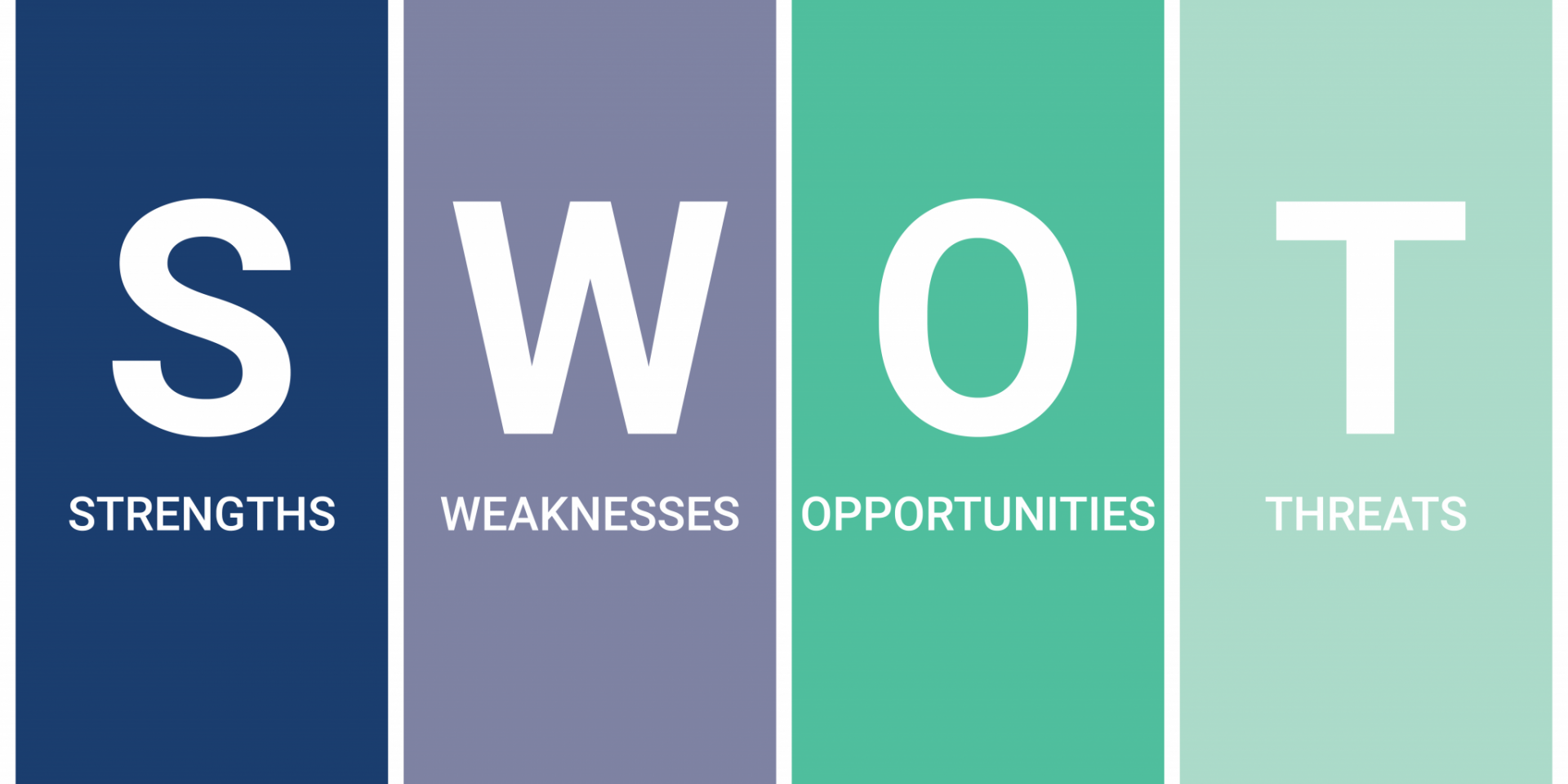How to Do a Social Media SWOT Analysis and Amplify Your Results
As a small-business owner, you might know it’s important to have a social media presence. At some point when you’re wearing multiple hats, however, you also might forget to pay attention to your social media — much less think about doing a social media SWOT analysis.
It’s easy enough to set up your social media pages and put a checkmark next to that box on your to-do list. What’s not so easy for busy entrepreneurs is keeping up with posting, engaging with their audience, boosting their content, and responding to followers’ questions and reviews.
To avoid falling into a “set it and forget it” mindset, we recommend performing a social media SWOT analysis — identifying strengths, weaknesses, opportunities and threats. Walking yourself through this process will help you stay sharp on social media and amplify your results.
Read more: 12 Secrets to Social Media Success: Part 1

What Is a Social Media SWOT Analysis?
By fine-tuning your social media, you’ll ensure you’re investing your money optimally on social media — not pouring money into the medium “just because.” With a social media SWOT analysis, you’re able to analyze your social media marketing strategy based on four quadrants:
- Strengths: What are you doing right on social media? What are your competitive advantages, and how well are you conveying them?
- Weaknesses: What factors might be holding you back on social media? Do you lack internal resources, budget or time?
- Opportunities: What do you stand to gain on social media? Is it new followers, greater engagement, new leads, brand awareness?
- Threats: What are some of the external forces that could hinder your progress on social media, such as competitors or economic factors?
You can perform an overall social media SWOT analysis periodically, perhaps on a quarterly basis. This will help dictate your general social media marketing strategy. However, it’s also wise to perform a social media SWOT analysis anytime you want to analyze a campaign or project.
Keep in mind, too, that your SWOT analysis requires that you measure not only hard numbers, but also customer sentiment about your brand. This means you’ll be looking at both your analytics as well as “softer” factors such as reactions to your posts and follower growth. Together, all of your metrics add up to social media success when all your gears are working properly.
“In 2020, an estimated 3.6 billion people were using social media worldwide, a number projected to increase to almost 4.41 billion in 2025.” — Statista
What Are Your Strengths?
What are you doing well on social media? Your analytics will show you how well you’re engaging with your community and which types of posts perform well. Other factors that might be considered strengths include:
- Brand-consistent messaging, imagery and use of assets such as company logos
- Authentic content featuring real people and places associated with your business
- Well-written captions that encourage engagement
- Ongoing boosting campaigns to make sure your content is more visible and has a better reach
- Audience engagement such as likes, comments and shares
- Replies to your followers’ comments, direct messages and reviews
Together, the strengths above help to differentiate you on social media. Instead of being just another company, you can set yourself apart. Over time, your strengths help you grow your social media presence and increase the chances of meeting other goals, such as new leads and sales.
Read more: 12 Secrets to Social Media Success: Part 2

What Are Your Weaknesses?
In many ways, you can look at your strengths in reverse in order to identify any weaknesses. Just as your analytics will show you what you’re doing well, they will show you low-performing posts and lack of engagement. Potential weaknesses could be:
- Off-brand imagery, poorly constructed captions, and inconsistent messaging and use of company assets such as logos
- Poorly written captions that don’t inspire your audience to engage
- Worn-out content featuring stock images or lacking variety (maybe you’re posting links all the time but no images or videos)
- Lack of ad budget, meaning your content isn’t getting seen because you’re not boosting it
- No audience engagement such as likes, comments and shares
- Few or no replies to your followers’ comments, direct messages and reviews
These weaknesses will prevent your page from working as hard as it could for you. Bottom line: Iron out your weaknesses to make them your strengths.
What Are Your Opportunities?
Analyzing your opportunities helps you weigh the risks against the possible rewards. It also allows you to see any potential areas for growth. This analysis might look something like this:
- Is the money I spend on boosting likely to help me gain new followers (risk versus reward)?
- Are there opportunities to engage with my existing follower base? (Keeping a current follower is just as important as gaining new ones, if not more so!)
- Are my customers asking the same questions or making the same requests over and over again? That is, is there an opportunity to improve my product or service, create certain offers and promotions, and better appeal to my customer base?
- Am I reading all my comments and messages to inform point #3 above?
Answering these questions will help you continue to grow on social media. Even when you have strengths or weaknesses, you need to keep re-assessing what’s working and what’s not.
What Are Your Threats?
Last up in your social media SWOT analysis: threats. Much like you’re making educated guesses about your opportunities, you’re doing the same with possible threats. Those threats might include:
- Economic factors that could impact buying behavior and social media usage, as we’ve seen during the pandemic.
- Competitors who come out with new offerings before you do. They could eat into your target market and gain market share.
- Other factors out of your control, such as new laws or regulations.
You can’t prepare for every threat, especially if you get blindsided like many businesses did with the pandemic. Not many people could have predicted how business would unfold in 2020, but COVID-19 has taught us not to get too comfortable doing things a certain way. For example, businesses had to shift to virtual offerings, online shopping, social distancing, safety protocols and other pandemic-related changes.
As much as possible, prepare for the unexpected. Think about worst-case scenarios and have a plan to address them.
And once you’ve laid out a complete social media SWOT analysis, you can identify your next move on social media. You’ll also be equipped to analyze any particular campaign before launching it.
The more you can play on your strengths and opportunities, and address your weaknesses and threats, the greater your results will be on social media. In many cases, your social media SWOT analysis can help you make the best decisions while avoiding any pitfalls.



